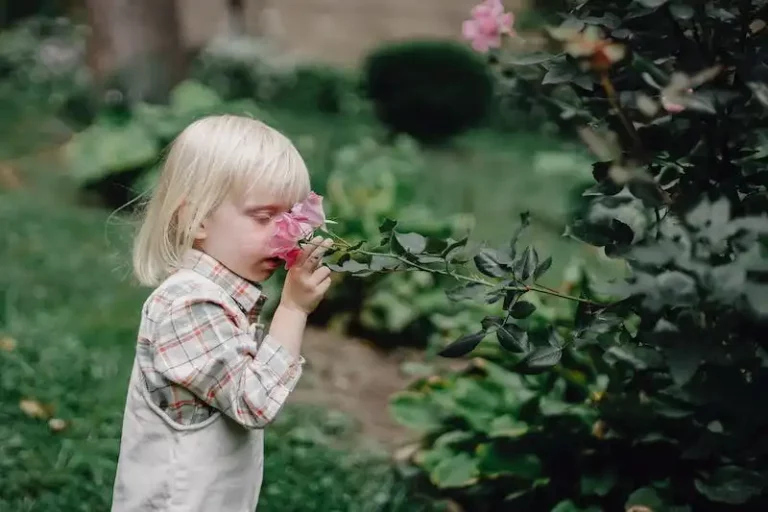If you’re looking to expand your collection of Alocasia Zebrina plants, propagating them is a great way to do so. With the right tips and techniques, you can successfully reproduce this unique and eye-catching plant, and share its beauty with others. Alocasia Zebrina, also known as Elephant Ear or Zebra Plant, is a popular houseplant due to its striking foliage. It has large, arrow-shaped leaves with prominent veining and a distinct zebra-like pattern. It is a tropical plant that thrives in warm and humid conditions, making it a favorite among plant enthusiasts.
When it comes to propagating Alocasia Zebrina, there are several methods you can try. One of the best ways to propagate this plant is through division and offshoots. This involves separating the baby plants or offshoots that grow from the main tuber or bulb of the parent plant. It’s important to choose a suitable part of the parent plant for propagation, ensuring it has enough growth and healthy foliage.
Before taking any offshoots or bulbs for propagation, it’s crucial to prepare the planting medium and container properly. Alocasia Zebrina prefers well-draining soil, so it’s recommend to use a mix that doesn’t retain too much water. Using a mix of peat moss, perlite, and sand is a good option. When selecting a container, make sure it has drainage holes to prevent water from pooling at the roots and causing root rot. Additionally, paying attention to the humidity levels and providing plenty of light for the newly propagated plants is essential for their success.
Once you have selected the appropriate offshoots or bulbs and prepared the planting medium, you can start the propagation process. Gently separate the offshoots or bulbs from the parent plant, making sure to keep the roots intact. Place the offshoots or bulbs into the prepared container, and lightly cover them with the soil mix. Water the newly propagated plant thoroughly, allowing the water to soak the soil and drain through the drainage holes. It’s important to keep the soil consistently moist but not overly saturated.
Propagation of Alocasia Zebrina requires time and effort, but with the right care, you can successfully propagate and grow these beautiful plants. Remember to provide them with the appropriate amount of light, water, and humidity, and they’ll reward you with their stunning foliage and vibrant growth. With this guide, you’ll be able to create a thriving collection of Alocasia Zebrinas in no time.
In conclusion, propagating an Alocasia Zebrina is a simple process that can be done through division and offshoots. By selecting the right parts of the parent plant, preparing the soil and container properly, and providing the right conditions, you can successfully propagate and grow more of these stunning plants. With their unique foliage pattern and tropical charm, Alocasia Zebrinas are sure to make a statement in any indoor plant collection
How to Propagate Alocasia Polly And Keep Them Alive
Propagating Alocasia Polly is a great way to multiply your collection of these beautiful plants, and with the right care, you can ensure their survival. Here are some tips to help you successfully propagate and care for Alocasia Polly.
Choosing the Right Plant
When selecting a plant to propagate, look for a fully-grown Alocasia Polly that has a beautiful show of leaves. This will ensure that the plant has reached maturity and is ready to be propagated.
Planting and Anatomy
Once you’ve selected your plant, it’s time to get started with the propagation process. First, choose a container that is about 3 inches in size and fill it with well-draining soil. Make sure to water the soil thoroughly before planting.
Next, carefully remove the offsets, or baby plants, from the parent plant. Be gentle to avoid damaging the roots or rhizome. If the roots look mushy or rotten, it’s best to discard the offset and try again with a healthier one.
Propagating Alocasia Polly
After carefully removing the offset from the parent plant, plant it in the prepared container. Make sure the rhizome is just below the soil surface, and lightly cover it with soil. Water the newly planted offset to help it settle into its new home.
Keep the soil moist but not waterlogged, as excessive moisture can cause rot. Place the container in a bright, indirect light location – Alocasia Polly prefers bright but filtered light, so direct sunlight should be avoided.
Taking Care of Your Propagated Alocasia Polly
Water your propagated Alocasia Polly as needed, making sure the soil doesn’t dry out completely. Alocasias prefer humidity, so misting the leaves can help create the right growing conditions.
Alocasia Polly can also be propagated through division. To do this, carefully remove the plant from its container and separate the rhizomes into smaller sections. Make sure each section has roots and leaves before replanting them in separate containers.
Conclusion
Propagating Alocasia Polly can be a rewarding and exciting process. By following these steps and providing the right care, you can keep your propagated plants alive and thriving. Remember to choose a healthy plant, handle the offsets with care, and provide the right amount of water, light, and humidity. With a little patience and attention, you’ll soon have a thriving collection of Alocasia Polly plants.
Choosing the Right Time
When it comes to propagating an Alocasia Zebrina, timing is crucial. You want to make sure that you choose the right time to propagate your zebrina plant to ensure its health and success.
The best time to propagate an Alocasia Zebrina is during the spring or summer months when they are actively growing. This is because the plant is in its prime growing season and has the best chance of successful propagation.
Before you begin the propagation process, make sure that your plant is healthy and thriving. Check for any signs of disease or pests, as this could negatively impact the success of propagation. Additionally, ensure that your zebrina plant has enough energy and nutrients to support new growth.
It is important to pay attention to the signs of growth on your zebrina plant. Look for new leaves forming and stems growing larger. This indicates that the plant is in a healthy state and ready for propagation.
When harvesting bulbs for propagation, select only the healthiest and most robust bulbs. Avoid bulbs that are mushy or have any signs of damage. Using a clean and sharp knife, carefully remove the bulbs from the parent plant, making sure to leave some roots intact.
Once you have removed the bulbs, it is important to handle them with care. Do not touch or handle the bulbs too roughly, as this can damage them and hinder their ability to grow new roots and shoots.
Choosing the right containers for propagation is also important. Use clean and well-draining containers that are filled with a suitable potting mix. Avoid using containers that are too large, as this can lead to overwatering and root rot.
When planting the bulbs, make sure to place them with their tops just above the soil level. This allows for proper growth and development of new shoots and roots. Be mindful of the amount of water you give to the newly propagated bulbs; they should be watered lightly and regularly to keep the soil moist but not overly saturated.
In conclusion, choosing the right time to propagate an Alocasia Zebrina is crucial for its successful growth. By paying attention to the plant’s signs of growth and health, harvesting the best bulbs, and providing proper care, you can ensure a beautiful and thriving zebrina plant.
Alocasia Polly Anatomy
The Alocasia Polly, also known as Alocasia Amazonica, is a beautiful plant with distinctive green foliage and striking white veins. In terms of anatomy, it shares many similarities with its close relative, the Alocasia Zebrina.
The Alocasia Polly has arrowhead-shaped leaves that are held on long, smooth stems. The leaves are typically green in color, with white veins that run perpendicular to the leaf midrib. Unlike the Alocasia Zebrina, the Alocasia Polly does not have the zebra-striped stems or the prominent leaf backing.
In terms of roots, the Alocasia Polly forms a substantial rootball with fleshy bulbs. The root system is crucial for the plant’s overall health and growth. When propagating the Alocasia Polly, it is important to handle the rootball with care to ensure the bulbs stay intact.
The best time to propagate the Alocasia Polly is in spring or summer, when the plant is actively growing. Take a sharp, clean knife and carefully separate the offsets from the parent plant, making sure that each offset has a healthy root system.
Before planting the offsets, it is recommended to let them air dry for some time to allow the cut ends to callous over. This step helps prevent rot and promotes successful rooting. Once the offsets are ready, plant them in a well-draining potting mix, leaving the top half of the bulbs above the soil level.
When it comes to caring for the propagated Alocasia Polly, provide it with the same attention and routine care as a fully-grown plant. Ensure it receives bright but indirect light, a suitable temperature range, and regular watering. Keep the soil slightly moist but not waterlogged, as excessive moisture can lead to root rot.
During the winter months, the Alocasia Polly may go into dormancy, and its growth may slow down or even stop. Reduce watering during this time and resume regular watering in spring when new growth starts to appear.
In conclusion, the Alocasia Polly shares many similarities in anatomy with the Alocasia Zebrina, but it has its own unique features as well. By properly propagating and caring for the Alocasia Polly, gardeners can enjoy the beauty of this plant for a long time.
Tips for Propagation
- Take offsets from a healthy parent plant.
- Carefully separate the offsets from the rootball.
- Allow the cut ends to callous over before planting.
- Plant the offsets in a well-draining potting mix.
- Keep the top half of the bulbs above the soil level.

